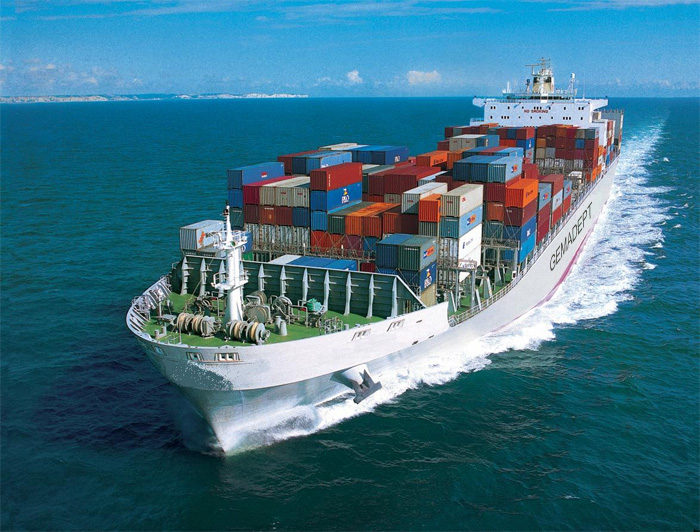Carriage of goods by sea is a transportation activity related to the use of infrastructure and means of sea transport, which is the use of land and water areas associated with sea lanes. States, territories, or areas within a country, and the use of sea-going ships, loading and unloading equipment, etc., for the movement of passengers and goods on sea lanes.

Carriage of goods by sea is relatively early in comparison with other modes of transportation (after river transport). As early as the 5th century BC, ancient nations like Egypt, China, Japan ... have learned to take advantage of the sea as the route to exchange the region, the region, the countries together in the world. Today, with the advancement of science and technology, sea transportation has become a modern shipping industry in the international transportation system, occupying an important factor in import and export.
Advantages of sea transport
Shipping by sea can be used to transport all types of goods.
Most of the sea transport routes are natural.
+ Transport capacity of shipping is very large.
Shipping by sea is not restricted to the tools of other modes of transport.
Low cost of construction, renovation, maintenance due to natural traffic
+ The ability to carry goods of large vehicles, carrying a variety of goods in a relatively large number.
The ability to use specialized containers is relatively high
+ The transport fee is lower than other means of transportation, suitable for transporting goods in large quantities.
The process of shipping goods by sea
Step 1: The units transporting the foreign party take the goods from the workshop of the exporter to the port of shipment. In this process, freight, by truck, by containerized trains or by rail, will be carried out in such a way as to save the cost and time.
Step 2: The transporting units shall carry out customs declaration, goods clearing, actual goods inspection, if required by the customs office, to compile the certificate of origin. At this stage, the transport unit will proceed to e-customs declaration, customs clearance services. Preparation of proof of origin, application for free circulation license of the exporting country.
Step 3: The shipping unit schedules shipment for sea freight, schedules, airplanes with air cargo. The shipping schedule will be informed and confirmed to customers so that it is close to the date of availability, suitable transportation time for customers to balance the cost and time.
Step 4: Issue bill of lading (B / L) for certificate of ownership. Make electrical delivery (telex release). The shipping unit will issue to the customer a single bill of lading consisting of three originals and three copies of the bill of lading as proof of ownership.
Step 5: When the goods arrive at the port of delivery, the transport unit will carry out customs clearance, customs clearance, goods inspection if the customer help. The consignee will receive receipts from the importer, so customs declarations and plans
Step 6: Domestic transportation, delivery from sea to warehouse, warehouse for the recipient in Vietnam. After completing the customs procedures. The transport unit will take the goods from the port to your company by truck or container.
Step 7: Teach and receive goods:
Forwarding agents of the forwarding company will come to the port or shipping agent to pay document fee, retail fee to receive the delivery order (D / O). Then the logistics forwarder will bring the D / O, commercial invoice and Packing list to the port office to sign the D / O to find the position, where we have to save a D / O.
Good price Safa Express is always for you
Quality and prestige

Introduced by my acquaintances try using the fast service of SAFA LOGISTICS. After using I found good service, professional counselors dedicated, reasonable price. Currently I am regular customer of SAFA LOGISTICS.

Dịch vụ tốt, giá rẻ. Nhân viên tư vân chuyên nghiệp nhiệt tình. Tôi sẽ tiếp tục ủng hộ dịch vụ của SAFA LOGISTICS
Hotline